Setting up and maintaining a 150-gallon aquarium requires careful consideration of various factors. The first step is choosing the right location by evaluating available space, weight-bearing capacity, and electrical outlets. Once the location is decided, it’s time to set up the tank by installing the filtration system, adding substrate, and filling it with water. Before adding any fish or plants, cycling the tank to establish a healthy environment is crucial. Choosing compatible fish and plants based on water parameters, feeding requirements, and compatibility comes next. Regular maintenance, including water changes, filter cleaning, and algae control, is necessary to keep the aquarium healthy. Monitoring water quality and addressing any issues in a timely manner is also emphasized. Follow these guidelines for a successful 150-gallon aquarium setup.
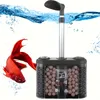
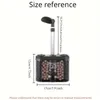
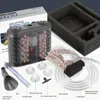
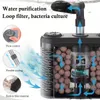
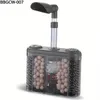

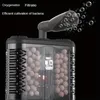

Choosing the Right Location
The first consideration is the available space. A 150-gallon aquarium is not small, so you need to ensure that you have enough space to accommodate it. The ideal location should be a flat, level surface with enough room around it for easy access and maintenance. You should also consider the height of the aquarium, as it will need to be placed in an area with sufficient clearance above it.
Another important factor to consider when choosing the right location for your 150-gallon aquarium is weight-bearing capacity. A full 150-gallon aquarium can weigh well over 1600 pounds, so it is crucial to ensure that the floor can bear this weight without any risk of cracking or collapsing. It is recommended to place the aquarium on a concrete slab or use a specially designed stand that can support the weight of the tank.
In addition to space and weight-bearing capacity, electrical outlets are another consideration when selecting the ideal location for your aquarium. A 150-gallon aquarium requires a lot of electricity for filtration, lighting, and heating systems. Ensure that there are enough electrical outlets nearby to plug in all the necessary equipment safely.
Lastly, it’s essential to choose a location that provides suitable lighting conditions for your aquarium. Direct sunlight can cause algae blooms and promote bacterial growth, which can harm the health of the fish and other inhabitants of the aquarium. In contrast, insufficient light can slow down the growth of plants and corals, which can also affect the overall health of the aquarium.
Setting Up the Tank
Aquariums are a fantastic addition to any home. They provide a relaxing and calming environment, and they are a great way to bring a slice of nature indoors. However, setting up the tank can be an intimidating task, especially for those who have never done it before. This guide is designed to help <150 gallon aquarium consumers> set up their tank correctly.
The first step in setting up a tank is choosing the location. It’s important to select an area that is stable and can support the weight of the tank. The location should also be able to accommodate the filtration system and other equipment needed for the tank.
Once you have chosen the location for your tank, it’s time to start setting it up. The first thing you need to do is install the filtration system. Filters are essential because they remove waste products from the water and keep the tank clean. There are different types of filters available, including hang-on-back, canister, and sponge filters. Choose the filter that best suits your needs and follow the manufacturer’s instructions to install it.
After installing the filter, you can add the substrate to the bottom of the tank. Substrate is the material that covers the floor of the tank and provides a natural environment for the fish and plants. Gravel, sand, and crushed coral are popular choices for substrate. Wash the substrate thoroughly before adding it to the tank to remove any dust or debris.
The next step is to fill the tank with water. It’s important to use dechlorinated water when filling the tank. Chlorine and other chemicals used to treat tap water can harm fish and plants. You can use a dechlorinator product to neutralize these chemicals.
It’s also important to test the water quality regularly. Test kits are available at pet stores and online. Testing the water for pH, ammonia, nitrite, and nitrate levels will help ensure that the water quality is safe for your fish and plants.
Cycling the Tank
Starting an aquarium is an exciting endeavor, but it requires patience and care to establish a thriving aquatic environment. Before adding any fish or plants, it’s crucial to cycle the tank to create a healthy habitat for them. Cycling the tank is the process of establishing beneficial bacteria in the aquarium that break down harmful toxins, such as ammonia and nitrite, into less harmful nitrate through the nitrogen cycle. This article will explain the nitrogen cycle, its significance, and provide tips on how to speed up the process.
The Nitrogen Cycle:
The nitrogen cycle is a natural process that takes place in all aquatic environments. In the aquarium, the nitrogen cycle starts when fish produce waste, uneaten food decompose, or plants shed leaves. This results in the production of ammonia, which can be toxic to fish and other aquatic animals. However, certain types of bacteria, called nitrifying bacteria, break down ammonia into nitrite, which is also toxic. A different type of bacteria then converts nitrite into less harmful nitrate. Finally, plants use nitrate as food to grow, and the cycle continues.
The Significance of Cycling the Tank:
Cycling the tank is essential as it establishes the necessary bacteria that help convert toxic compounds into harmless ones. Without this process, the water quality in the aquarium would deteriorate, leading to sick fish and eventually death. Therefore, it’s crucial to allow the nitrogen cycle to establish before adding any aquatic life form to the aquarium.
Tips to Speed Up the Process:
Cycling the tank can take anywhere from three to six weeks, depending on various factors such as the size of the aquarium and the amount of ammonia produced. However, several ways can speed up the process.
Firstly, adding nitrifying bacteria can help jumpstart the process. These bacteria come in liquid or powder form and can be added directly to the aquarium. They help establish the necessary bacteria in the aquarium, speeding up the nitrogen cycle.
Secondly, adding a small number of hardy fish can also speed up the process. The fish produce ammonia, which activates the nitrogen cycle. However, it’s crucial not to add too many fish and monitor their behavior and health regularly.
Thirdly, using an established filter from another aquarium can help introduce the necessary bacteria into the new aquarium. It’s essential to ensure that the filter is healthy and has no signs of disease.
Choosing the Right Fish and Plants
Compatibility
One of the most important factors to consider when choosing fish for your aquarium is compatibility. Some fish are naturally more aggressive or territorial than others, which can lead to conflicts if they’re not kept in the right environment. Before buying any new fish, do some research to see if they’re compatible with the species already in your tank. You should also consider the size of your tank – larger tanks can support more fish, while smaller tanks may only be able to accommodate a few peaceful species.
Water Parameters
Different fish species have specific requirements when it comes to water temperature, pH, and other parameters. It’s important to choose fish that can thrive in the conditions of your tank. Some species are more adaptable than others, but generally speaking, it’s best to avoid mixing fish with vastly different water parameter requirements. Make sure to test your water regularly to ensure that it stays within the ideal range for your fish.
Feeding Requirements
Just like humans, different fish have different nutritional needs. When choosing fish for your aquarium, it’s important to consider their feeding requirements. Some species are carnivorous and require a diet of meat-based foods, while others are herbivores and need a plant-based diet. Others may be omnivores and eat a combination of both. Do some research on the dietary needs of the fish you’re interested in to make sure you can provide them with the appropriate food.
Plants
Adding plants to your aquarium can provide numerous benefits, including oxygenation, natural filtration, and aesthetic appeal. However, not all plants are suitable for all environments. Some plants require strong lighting or specific water parameters to thrive, while others are hardy and can adapt to a variety of conditions. When choosing plants for your aquarium, consider the lighting and water conditions in your tank, as well as the needs of any fish you already have.
Maintaining Your Aquarium
If you are a proud owner of a 150-gallon aquarium, you know that it requires regular maintenance to keep it healthy and beautiful. Proper care and attention will not only help your fish thrive but also ensure that your aquarium remains a stunning centerpiece in your home. Here are some tips for maintaining your aquarium.
Water Changes:
One of the most crucial tasks in aquarium maintenance is changing the water. Water changes remove waste products, excess nutrients, and other pollutants from the tank, keeping your fish healthy. For a 150-gallon aquarium, it is recommended to change around 20% of the water every two weeks. This translates to 30 gallons of water, which should be siphoned out using an aquarium vacuum. Make sure that the water you add back into the tank has been treated with a dechlorinator. Also, ensure that the newly added water is at the same temperature as the tank water to avoid shocking your fish.
Filter Cleaning:
A filter is a vital component of any aquarium. It removes debris, uneaten food, and waste products from the water, keeping it clean and clear. However, filters need to be cleaned regularly to maintain their efficiency and prevent clogs. For a 150-gallon aquarium, it is recommended to clean the filter every month or so. Remove the filter media and rinse it with tank water (avoid using tap water, as it contains chlorine). Additionally, check the impeller and tubing for any blockages or damage and clean them if necessary.
Algae Control:
Algae growth is a common problem in aquariums, and controlling it requires a multi-faceted approach. The first step is to reduce the amount of light your aquarium receives. Algae thrives on light, and limiting its exposure can limit its growth. Additionally, consider adding algae-eating fish, such as plecos or otocinclus catfish, to your tank. These fish consume algae and help keep it under control. Lastly, manually remove any visible algae using a scraper or brush.
Water Quality Monitoring:
Monitoring water quality is critical for maintaining a healthy aquarium. Invest in a good-quality test kit that measures parameters such as pH, ammonia, nitrite, and nitrate. Test your water regularly, especially after performing water changes or adding new fish. If you notice any abnormalities, address the issue promptly. For example, if your ammonia levels are high, perform a water change immediately.
In conclusion, maintaining a 150-gallon aquarium requires regular maintenance, which includes water changes, filter cleaning, algae control, and water quality monitoring. By following these tips, you can ensure that your aquarium remains healthy and beautiful. Remember that prevention is key – addressing issues promptly can prevent larger problems down the line. With proper care, your aquarium can bring joy and beauty to your home for years to come.
FAQ
Q: How often should I clean my 150-gallon aquarium?
A: It is recommended to perform a partial water change of 10-15% every week, and a thorough cleaning of the tank once a month. This includes scrubbing the algae off the walls and decorations, vacuuming the substrate, and changing the filter media if necessary. Regular maintenance not only keeps the aquarium looking clean but also helps maintain healthy water parameters for your fish and plants.
Q: What type of filtration system should I use for my 150-gallon aquarium?
A: A canister filter or sump system is ideal for a 150-gallon aquarium. These systems provide excellent mechanical, biological, and chemical filtration, ensuring that the water quality remains optimal for the inhabitants. It is important to choose a filter that is rated for a larger aquarium than what you have to avoid overworking the filtration system. Additionally, it is advisable to run the filter 24/7 for maximum effectiveness.
Q: Can I keep any fish species in my 150-gallon aquarium?
A: The size of the aquarium opens up several possibilities for fish keeping, but it is essential to research each species before adding them to your tank. Some popular options for a 150-gallon aquarium include cichlids, angelfish, discus, tetras, barbs, and rasboras. Ensure that the fish are compatible in terms of temperament, size, and water parameter requirements. Overstocking the tank can lead to poor water quality, stress, and disease.
Q: Do I need to add fertilizers to my planted 150-gallon aquarium?
A: Yes, aquatic plants require nutrients such as nitrogen, phosphorous, and potassium to thrive. Adding a high-quality liquid or root fertilizer once a week will provide the necessary nutrients for lush plant growth. It is also essential to ensure that the lighting is adequate for the plants’ needs and that the carbon dioxide levels are sufficient. Regular pruning and removal of dead plant matter will help maintain a healthy ecosystem for both the plants and fish.

